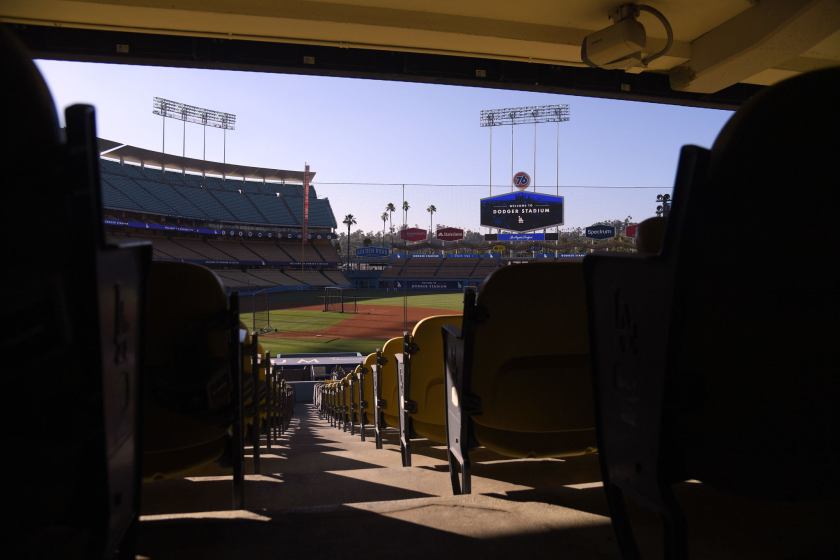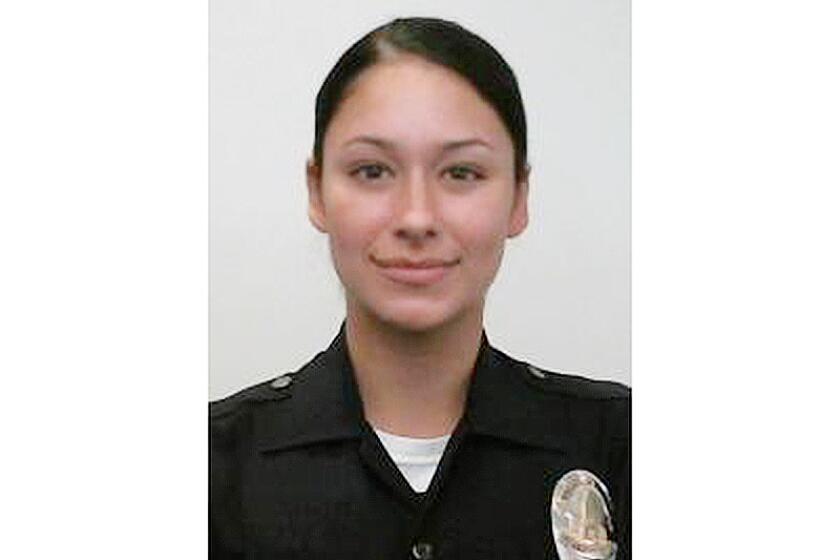Pentecostal Memorial Is Poised for a Revival
- Share via
A group of religious and civic leaders is seeking public support for a long-stalled memorial in Los Angeles’ Little Tokyo honoring the African American preacher who a century ago launched a multiracial mission there that grew into the worldwide Pentecostal movement.
The project has been bogged down for nearly 10 years in part because the Japanese American Community and Cultural Center has refused to allow a mural on a wall it owns on the Azusa Street site where the Rev. William J. Seymour’s church once stood. In addition, some local clergy are concerned about Pentecostal churches’ conservative stances on religious and social issues.
Hoping to capitalize on the current Black History Month, proponents said the “Azusa Street SpiritWalk” would be a spiritual destination for Pentecostals from around the world and help boost Little Tokyo’s sagging economy.
The project, estimated to cost $250,000, would consist of an outdoor promenade and a mural depicting the histories of the church and of the diverse neighborhood where immigrants and nonwhites lived in the early 20th century. The area is now a trash-littered alley near 2nd and San Pedro streets facing the backs of businesses.
Though few people outside Pentecostalism know of him, Seymour was a son of slaves whose around-the-clock religious revivals drew thousands to the Azusa Street Mission and made him a revered figure.
“He stands shoulder to shoulder with such leaders of African descent as Nelson Mandela, Martin Luther King, Malcolm X,” said Les Hamasaki, an urban planner who serves on the Azusa Street Memorial Committee and the Tom Bradley Legacy Foundation board of directors, a group founded by the late mayor and his supporters.
The Bradley foundation, which is affiliated with UCLA, has committed $25,000 to fund a feasibility study, and the city’s Community Redevelopment Agency has promised $25,000 of in-kind service, according to Hamasaki, who was on the city planning and airport commissions in the 1990s.
Last week, the city Human Relations Commission and City Councilwoman Jan Perry, whose district includes Little Tokyo, gave their support.
“It’s a fascinating project,” Perry said. “It’s fascinating because it will broaden people’s understanding about the historical context of Little Tokyo and the migration southward of Central Avenue and of African Americans. We have so many common historical roots in this city.”
She said the story of a black preacher in an ethnically diverse neighborhood who had many followers who weren’t black is a story that needs to be told.
“William J. Seymour had broken the barrier on race relations in Los Angeles before Martin Luther King ever lived,” said Fred Berry, an elder at the West Angeles Church of God in Christ and a coordinator for the centennial celebration of the Pentecostal Movement, scheduled for April 25-29 in Los Angeles. “He was a pioneer, a trendsetter who had the first multicultural experiment.”
Pentecostals believe the spiritual gifts of speaking in tongues, witnessing signs and performing miracles are available to them through baptism, as they were to the 1st century apostles. They are thought to be the single largest group of Protestants, with an estimated 500 million members around the world.
Supporters of the project held a conference Friday at Los Angeles City Hall. Among the speakers was Cecil M. Robeck Jr., a professor of church history at Fuller Theological Seminary and an authority on Pentecostalism, whose new book is titled “The Azusa Street Mission and Revival: The Birth of the Global Pentecostal Movement.”
His research led to old newspaper accounts and contacts with 500 people who remembered the Azusa Street Mission, which lasted in Little Tokyo until 1931, about nine years after Seymour’s death.
Robeck said he learned that the mission “turned everything upside down in Los Angeles and all the major churches were trying to figure out how to relate to it. Within six months, it was running 1,500 people, sending missionaries all over the world. That’s a huge story that most people don’t know.”
A Times story on April 18, 1906, was headlined: “Weird Babel of Tongues. New Sect of Fanatics Is Breaking Loose. Wild Scene Last Night on Azusa Street. Gurgle of Wordless Talks by a Sister.”
The article went on to state: “Breathing strange utterances and mouthing a creed which it would seem no sane mortal could understand, the newest religious sect has started in Los Angeles. Meetings are held in a tumble-down shack on Azusa Street, near San Pedro Street, and the devotees of the weird doctrine practice the most fanatical rites, preach the wildest theories and work themselves into a state of mad excitement in their peculiar zeal.”
Robeck said there were pre-Azusa Street Pentecostals in Texas and Kansas, but their numbers were small. So the Little Tokyo site is considered the birthplace of the global movement.
Today, the only commemorations at the site are a modest plaque marking the mission’s founding, another plaque and a grapefruit tree honoring Seymour and his wife, Jennie, and a Los Angeles city sign on the street that says, “Site of Azusa Street Revival 1906-1931.”
The Japanese American Cultural and Community Center at the site has a spacious plaza, theater and office building.
Victor Wong, director of administration at the cultural and community center, said his organization would not change its position that the mural would hamper operations because that wall contains power panels and hardware required for plaza events.
In the past, the center has considered adding a housing component, among other changes, to its campus, but no decisions have been made on that or other renovations.
However, the center does support “the recognition of the location as a historical site,” and will fully cooperate with Pentecostal centennial celebrations that will entail setting up tents on the plaza, Wong said.
Pentecostals have expressed interest in buying some of the property if it becomes available, but Wong said it is not for sale.
The Rev. Billy Wilson, executive director of the Azusa Street Centennial Celebration, said Pentecostal churches around the world want to see the property preserved.
Bill Watanabe, chairman of the Azusa Street Memorial Committee, said some people in the neighborhood oppose the memorial project because they erroneously think it would make Little Tokyo into “the Pentecostal capital.”
Watanabe, who is executive director of the Little Tokyo Service Center, stressed that the promenade would recognize other faith traditions and said it should be welcomed.
In another wrinkle, Pentecostals’ positions on some social issues have made some other religious leaders uneasy.
“The issue for us is whether or not the Azusa Street Mission organization represents values that we believe Little Tokyo represents,” said the Rev. Mark Nakagawa, senior pastor of Centenary United Methodist Church and a member of a Little Tokyo-area interfaith group.
“Those values are inclusiveness, tolerance and openness with respect to ethnicity, gender orientation and the diversity of culture,” Nakagawa said.
He said he plans to ask Robeck about such topics at a March 6 meeting.
Robeck has said that Pentecostals would not use the site for proselytizing and that he thought all the issues could be resolved.
More to Read
Sign up for Essential California
The most important California stories and recommendations in your inbox every morning.
You may occasionally receive promotional content from the Los Angeles Times.













